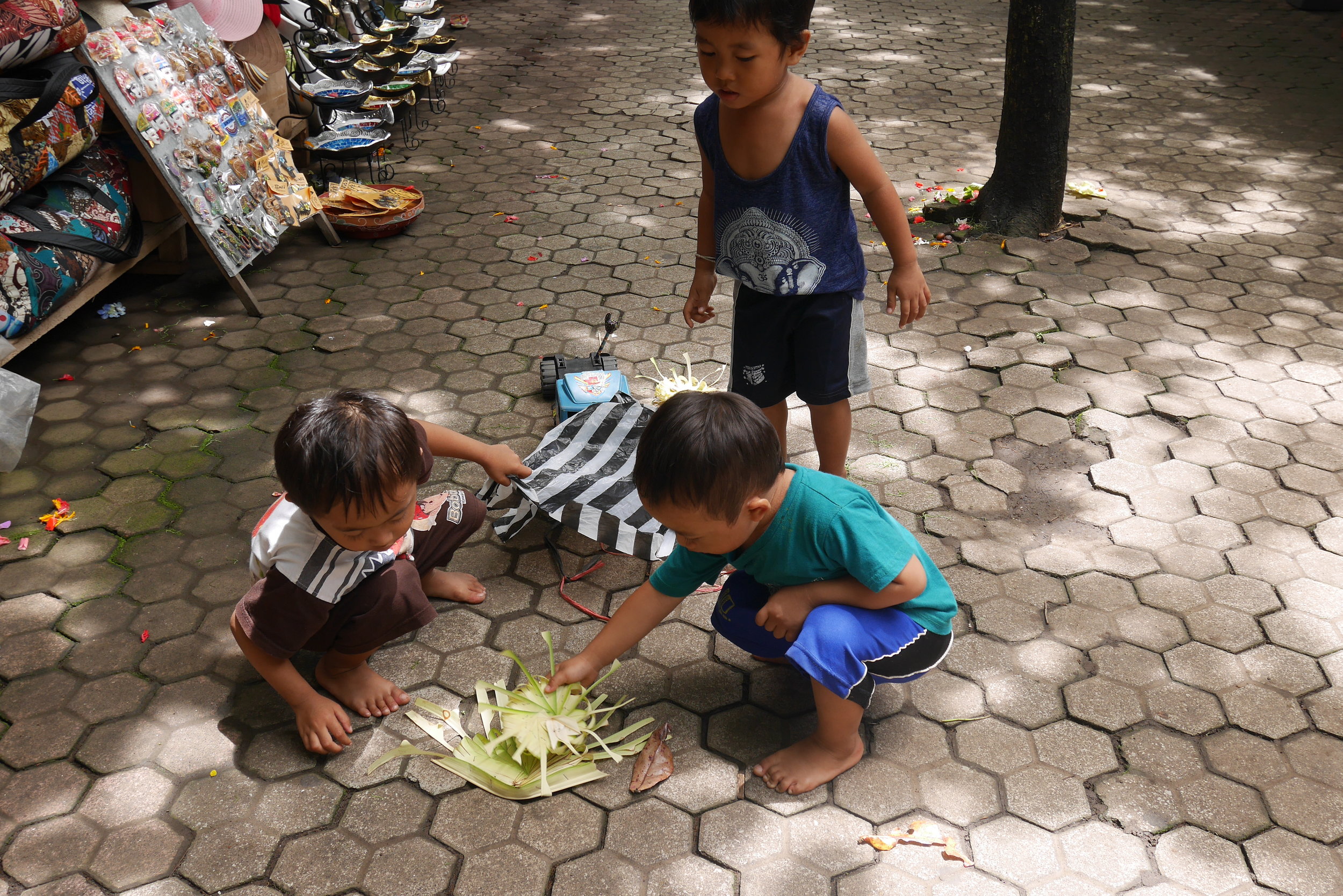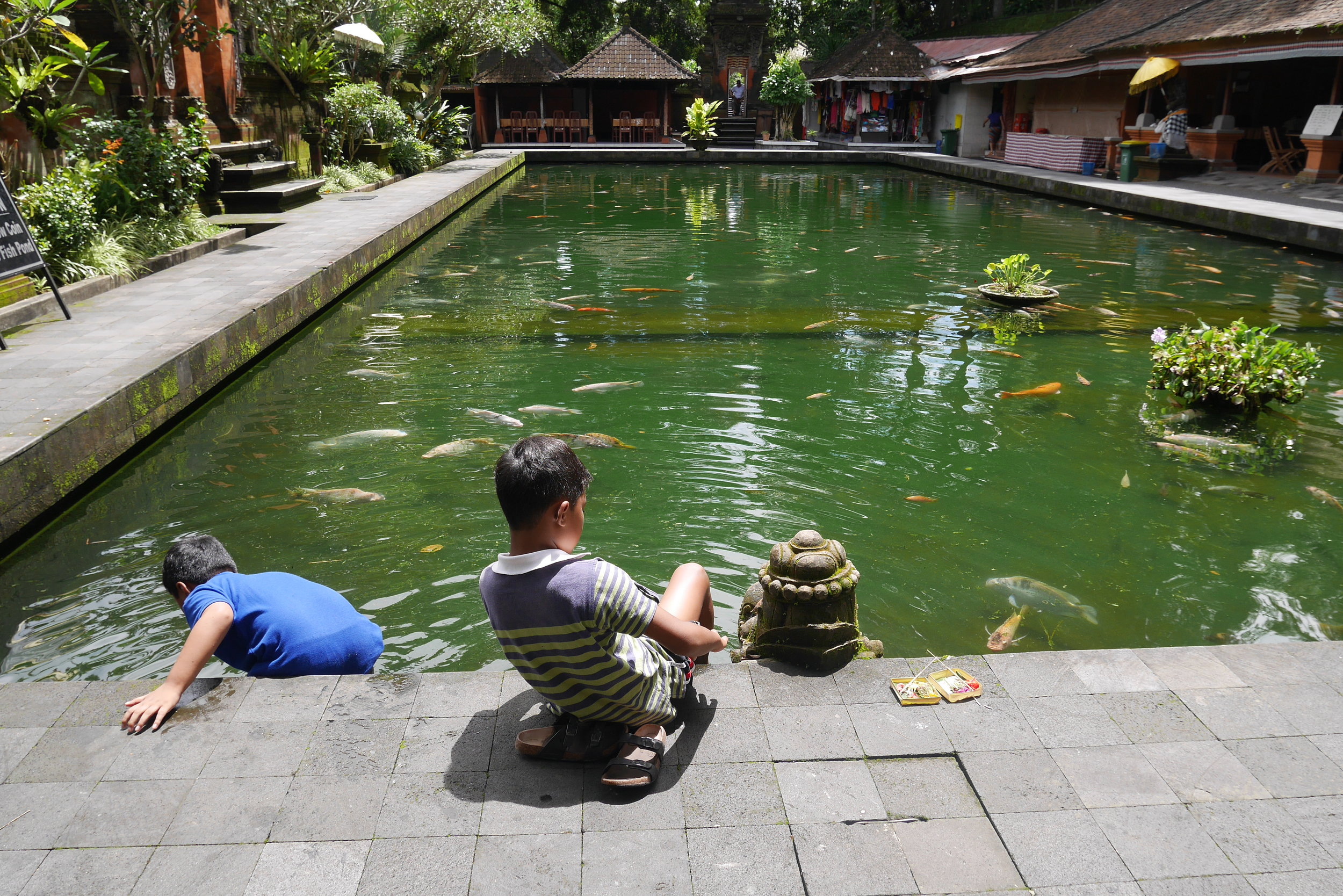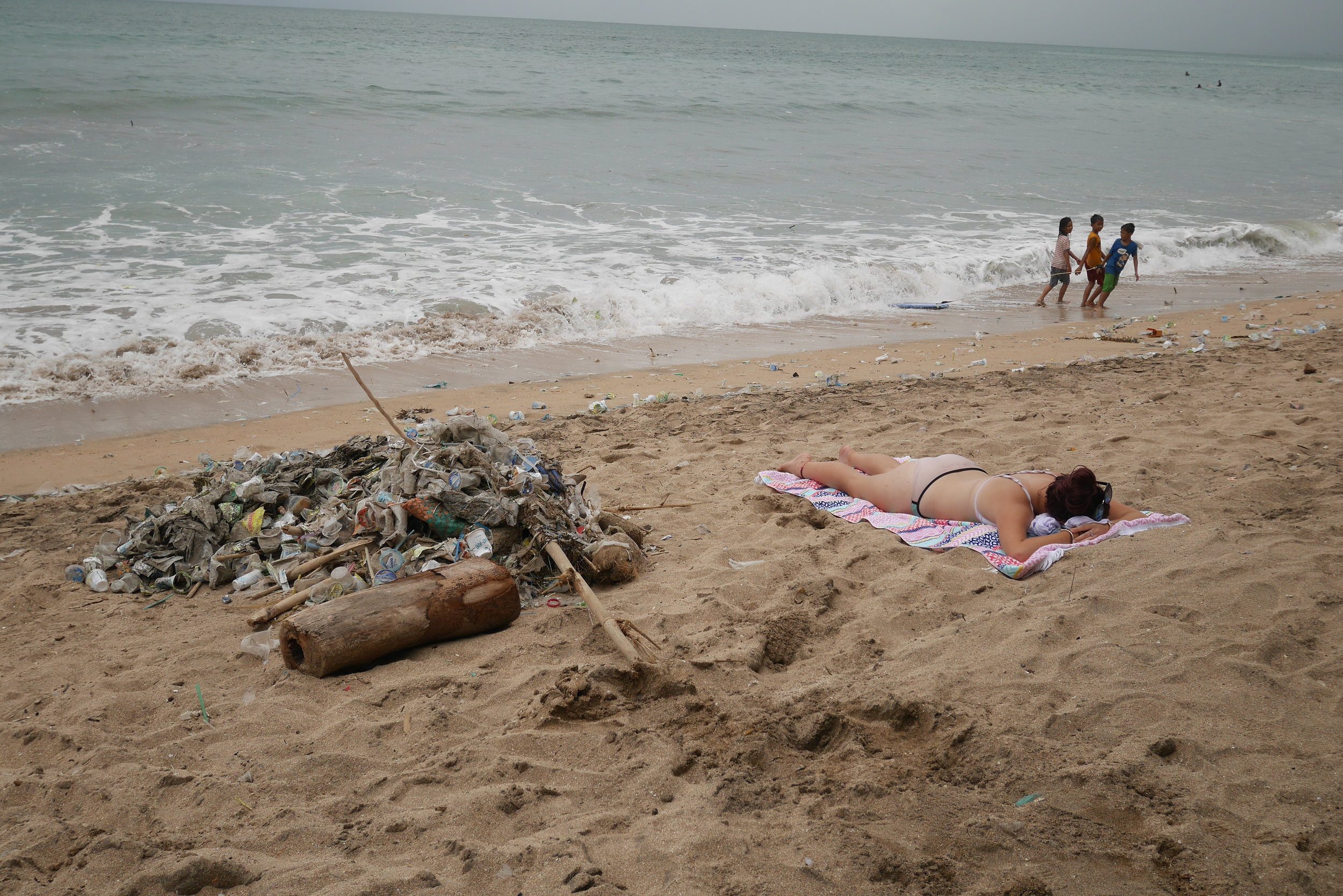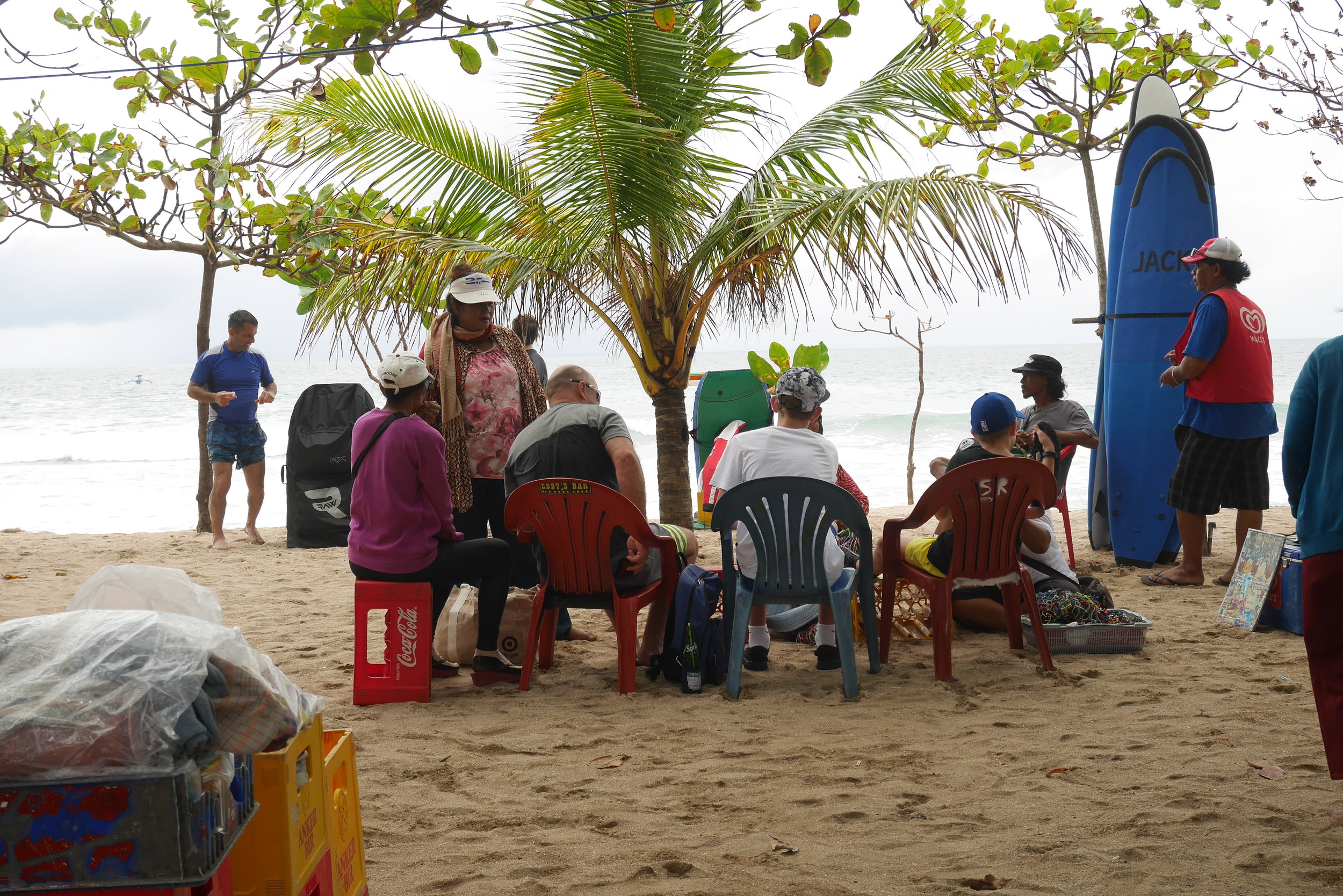Navigating the in-between: Glimpses of Bali
12 Feb 2017 by Sabriena Loh
"Our identity is at once plural and partial. Sometimes we feel that we straddle two cultures; at other times, that we fall between two stools. But however ambiguous and shifting this ground may be, it is not an infertile territory for a writer to occupy. If literature is in part the business of finding new angles at which to enter reality, then once again our distance, our long geographical perspective, may provide us with such angles."
—Salman Rushdie, Imaginary Homelands
One of the reasons why the 2010 film 'Eat Pray Love' starring Julia Roberts as author Elizabeth Gilbert was so successful lies in its portrayal of how effortless immersing oneself in a whole other way of life seems. The heroine flits from glorious, pasta-slurping Italy to an ashram or spiritual sanctuary away from hectic Delhi, then ends her year in Bali, where love finds her in the form of a tan, Brazilian man with a passion for wine and mix-tapes.
Idealistic as one may be, I decided to approach Bali with a touch of Gilbert's spirit in me. So here I was, longing to embark on an uncharted adventure filled with people, conversations and epiphanies.
In reality, this was a trip lasting only three to four days. Still, I wanted to throw off the baggage of being a tourist, which was ironic since choosing to book a villa in the heart of Bali’s Seminyak pointed to several wild nights out, dribs and drabs of culture to take in during the day, and hearty, affordable meals in eclectic cafés.
But what I mean by 'tourist' is how one plans to go to a place with a subconscious yet feverish desire to be drastically impressed in exchange for the money paid. The very word itself hints at a comfortable, capitalistic and faintly colonial attitude towards circumstances. It means accepting a catered adventure that does anything but push you out of your all-expenses-paid-for comfort zone.
A man offers prayers on the road, oblivious to the bustling incoming traffic.
Throughout my time there, I wondered if the people in Bali thought any differently about tourists. On our first ride from the airport to the villa, I was surprised that the driver thanked us for choosing to visit Bali.
“Bali needs tourists,” he told us with a grin as we watched throngs of white, half-nude men graced with palm tree prints and flip-flops hooting and whizzing past on rented motorbikes.
Motorcyclists in Bali are ubiquitous kings of the road. They dominate every line of vision, peripheral or otherwise. Often, we found ourselves hopping from the left to right side of the street, and then left again. Indonesian women and children would attempt to sell friendship bracelets and assorted trinkets along the way, sometimes calling after you as you saunter by. Cab drivers do the same. They harass pedestrians with sharp honks and beeps, stalling traffic if they can afford spending some time to persuade the intended target. Still, the occasional bakso man selling Indonesian meatballs made from beef surimi greets disgruntled tourists like a cool breeze, offering an inexpensive and authentic treat.
<IMG_2130.JPG> Inscribed on the bottle is the image of Ganesha, a Hindu god, with a label that reads “Bali’s Spirit”.
My interest in Bali lay in the idea and practice of religious appropriation, something that can be found almost everywhere. We hired a driver, Nyoman, towards the end of our trip and visited Pura Tirta Empul, a Balinese Hindu water temple. I felt a tinge of cynicism creep up as I watched people from all over the world taking a dip in its crystalline waters. Had they known the significance of what they were partaking in? Or was it just a casual, fun dip in a pool they had chanced across on ‘exotic’ temple grounds?
Later, I recognised this as part of a gracious, Balinese way of life. In accordance with Balinese Hinduism, six major temples or sad kahyangan are built to honour the six most prominent features of the land. These include the forests, mountains, sea, lakes, rice fields and the earth itself. These temples are situated along major intersecting points, which could possibly represent the merging of the six features and elements. If so, I see how the image of blessing and thanksgiving flowing from an epicentre has the ability to gently shape one man’s mind, one’s community and finally, one’s society. These temples are open to the public, which means that anyone can enter and partake of this vision if one wishes to learn its meaning.
While Pura Tirta Empul is not one of the six, its role is essentially indispensable and in alignment with that image. Apart from its religious role, water temples play a huge ecological role as well; they contribute to the subak, or the irrigation system, which is seen most prominently at the Tegallalang rice terraces. Dating back to the 9th century, the subak is a system formed on Tri Hita Karana, a philosophical concept that aims to unite the spirit, the human world and nature itself. What I find fascinating is how the network of water flowing from the temples aids irrigation—a system of control allows farmers to adjust the flow of water, which in turn affects the ecological processes in their fields. Understandably, some anthropologists argue how plonking the origins and philosophy of the irrigation system into a box labeled ‘culture’ could dim its socio-political potential and significance.
A view overlooking the Tegallalang Rice Terrace
I was busy snapping pictures when a man clad in a white sarong at the temple came up to me and asked if I want to learn the history of the place. “Do you charge?” I enquired. He tried to avoid answering the question, though he nodded affirmatively soon after. Prior to our temple visit, we had stopped by Goa Gajah, an intricately carved Elephant Cave. Men clad in batik had approached my friends and I, asking a similar question, quoting incredulous prices in USD instead of rupiah.
At the water temple, we had to pass through a route that had been intentionally designed for tourists. It led us on a confusing loop, with souvenir shops and Indonesian women who would stop us halfway through, touting a selection of batik cloth, printed tees and anything else one could lay their eyes on. The persistent touting made going to the temple almost seem like a distant memory, and we were relieved to find Nyoman waving at us from afar.
Later, I learned from Nyoman that there are two other types of temples besides the public ones: temples for families, and temples for villages. Naturally, visitors are not allowed. We were only able to catch glimpses of village shrines from outside walls as our van rumbled past. Residential areas are also situated behind shops along the main streets, so they are out of sight and often out of mind.
Our driver stopped us off for lunch in Ubud, where we finally got a little peace and quiet from the tedious city. We headed up past rice fields along the way to Sari Organik, a restful sanctuary away from the bustling crowds.
While most of the Balinese on the island who work in tourism can usually be aggressive salesmen and women, Nyoman stated it is necessary simply because it’s “good for the economy”. Even as the pro-choice, left-leaning liberal in me admits it was difficult seeing Indonesian women massaging the feet of white men at Kuta beach, I had to remind myself to see things from a practical point of view. Perhaps religious and cultural appropriation has never been an issue for the Balinese. Even if it has, it is only right to allow their way of life from a distance. From the perspective of a Balinese native whose livelihood depends on whether or not tourists visit, handing over the right to bargain is considered a means of surviving in a globalised world. This is their reality.
Yet, commercialisation has trumped much of the way the Balinese people represent themselves. At religious sites and on the main street, touting seems to be the major form of communication between the Balinese and tourists. Real conversations are also limited due to language barriers; from my experience, many natives are still working on their command of English, though some can also speak basic Japanese. These experiences could be the results of a small island flinging its doors wide open to globalisation, so we never really get to know them. Still, I find it unfair to write off the Balinese culture as ‘diluted’ so quickly, not forgetting that the furthest we travelled were areas largely dominated by tourists, from Kuta to Seminyak and up to Ubud.
At least I can now tell the difference between the tourist and the traveler: the latter often leaves, wanting a purer understanding of the worlds she so often bolts across. Maybe one needs to visit again and again to refine that new angle Rushdie talks about. Hopefully, these liminal grounds aren’t infertile territory, revealing my ‘otherness’ as an outsider to Bali, but are in fact opportunities to explore the unknown, and the in-betweens.
A woman looks out from Sari Organik, a restaurant situated in a restful corner of Ubud.








